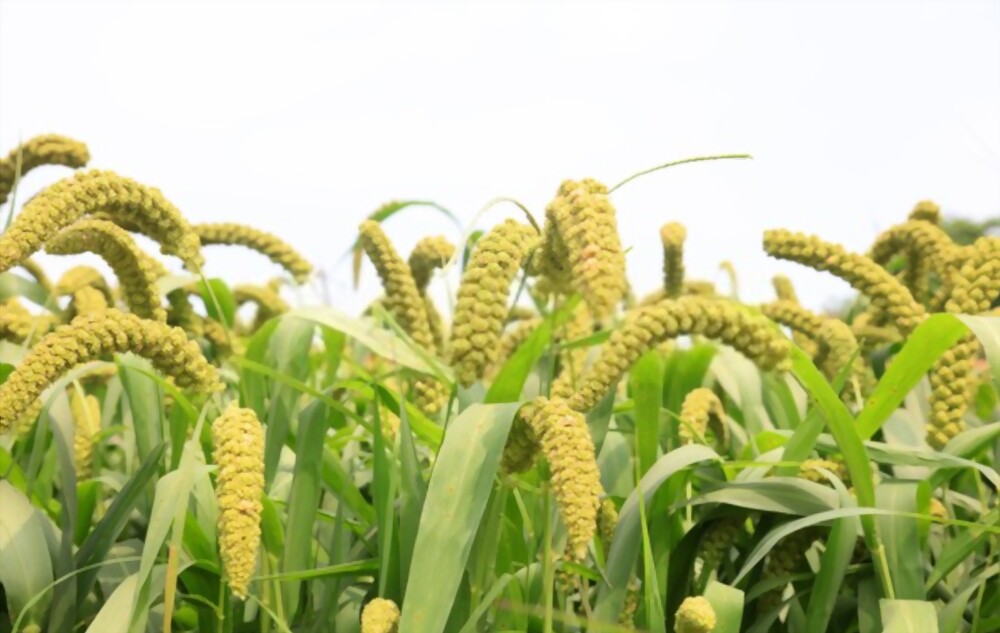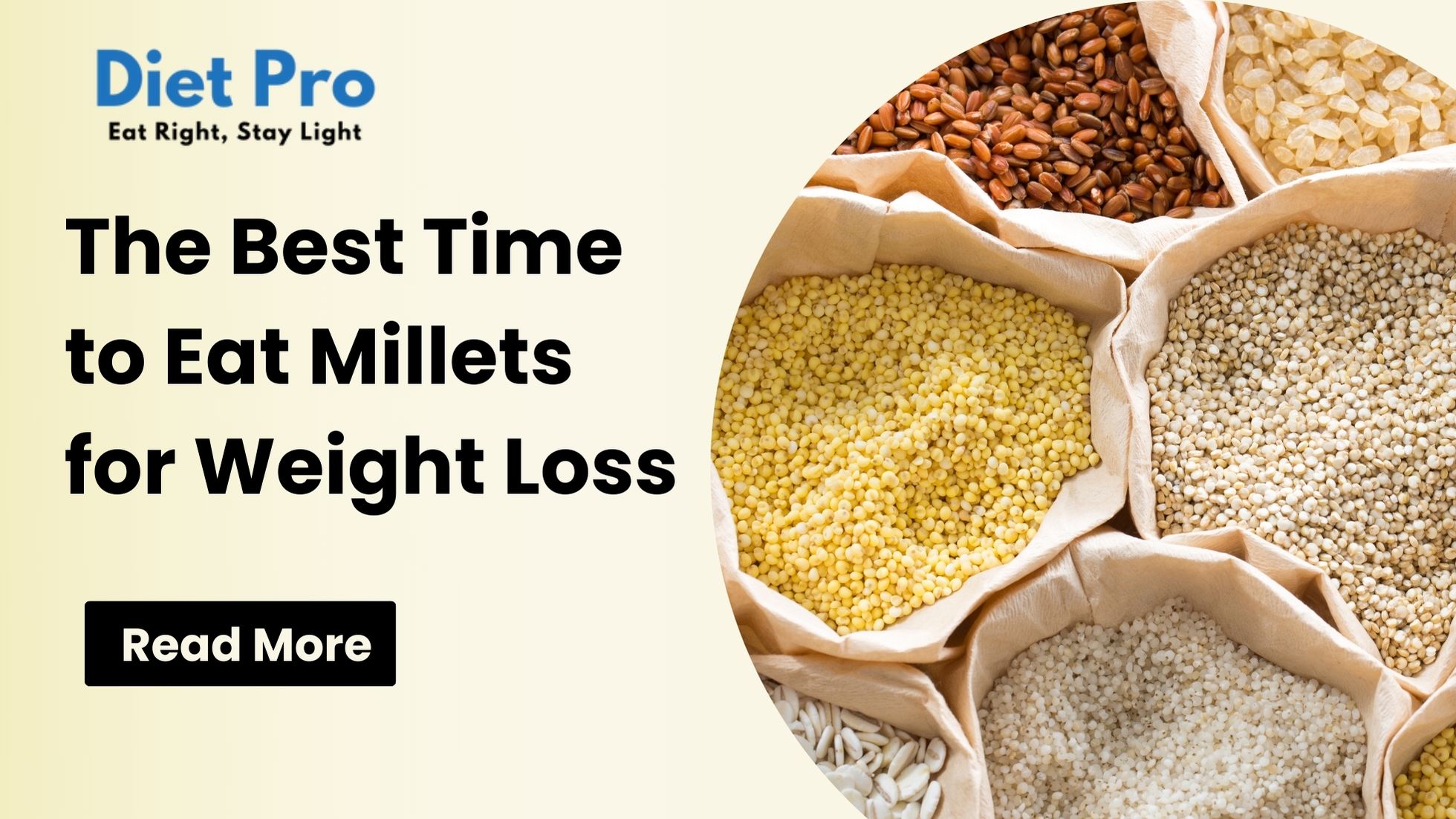In the pursuit of a healthy and sustainable weight loss journey, exploring alternative grains like millets can be a game-changer. Millets, often referred to as the ancient grains, are nutrient-dense and offer a plethora of health benefits, making them an ideal addition to your weight loss diet. In this blog post, we’ll delve into the best time to eat millets for weight loss, discover which millet is most effective, and explore various ways to incorporate these tiny powerhouses into your daily meals. Let’s know more about Best Time to Eat Millets for Weight Loss but before this we have to know more about millets.

Read More :- Fish Oil Beneficial for Hair Growth
What are Millets ?
Millets are a group of small-seeded grasses that have been cultivated for thousands of years as a food staple in various parts of the world. These grains are considered ancient grains and have recently gained popularity due to their nutritional benefits and versatility. Millets are known for their resilience in diverse climates and their ability to grow in less fertile soil, making them an important crop in many regions.
There are several types of millets, and some of the most commonly consumed ones include:
- Foxtail Millet: This millet is rich in dietary fiber, protein, and essential minerals such as iron and magnesium. It has a nutty flavor and is commonly used in breakfast dishes, porridge, and baked goods.
- Pearl Millet (Bajra): Pearl millet is a staple in many African and Asian countries. It is rich in protein, fiber, and essential nutrients like iron and phosphorus. It is often used to make flatbreads, porridge, and traditional alcoholic beverages.
- Proso Millet: Also known as common millet or broomcorn millet, proso millet is a drought-resistant grain. It has a mild, nutty flavor and is used in various dishes, including porridge and as a rice substitute.
- Barnyard Millet: Barnyard millet is high in fiber, calcium, and phosphorus. It has a slightly nutty flavor and is often used in porridge, upma, and other dishes.
- Little Millet: Little millet is rich in fiber, iron, and B vitamins. It is often used in a manner similar to rice and can be cooked as a pilaf or added to soups and stews.
- Finger Millet (Ragi): Finger millet is particularly rich in calcium and is commonly used in South Indian cuisine. It is often ground into flour and used to make flatbreads, porridge, or added to other dishes for its nutritional value.
Millets are valued for their nutritional content, which often includes a good balance of carbohydrates, fiber, proteins, and various vitamins and minerals. They are gluten-free, making them suitable for individuals with gluten sensitivities. The diverse nutritional profiles and adaptability of millets contribute to their popularity as a healthy and sustainable food source.

The Best Time to Eat Millets for Weight Loss
Understanding the timing of your meals can significantly impact your weight loss efforts. Consuming millets at specific times can enhance their effectiveness in supporting your weight loss goals. Generally, it is recommended to include millets in your breakfast and lunch. Starting your day with a millet-based breakfast provides a sustained release of energy, keeping you fuller for a more extended period and reducing the likelihood of overeating later in the day.
Which Millet is Good for Weight Loss
Different millets offer various nutritional benefits, but one that stands out for weight loss is foxtail millet. Foxtail millet is rich in dietary fiber, which aids in digestion and promotes a feeling of fullness. Additionally, it has a low glycemic index, helping to regulate blood sugar levels and prevent sudden spikes, making it an excellent choice for those aiming to shed pounds. Let’s find out some Best Time to Eat Millets for Weight Loss.
How to Consume Millets for Weight Loss
- Millet Porridge for Breakfast: Start your day with a hearty millet porridge. Mix foxtail millet with water or milk, add a dash of honey or fruits for sweetness, and enjoy a filling and nutritious breakfast.
- Millet Salads for Lunch: Incorporate millets into your lunch by tossing them into a vibrant salad. Combine cooked millets with a variety of vegetables, lean proteins, and a light vinaigrette for a satisfying and weight-loss-friendly meal.
- Millet Snacks: Swap your usual evening snacks with millet-based options. Millet snacks are not only delicious but also provide a healthy alternative to processed snacks, supporting your weight loss journey.
- Millet as a Rice Substitute: Substitute rice with millets in your meals. Whether it’s foxtail millet, barnyard millet, or little millet, these grains can be cooked and served as a nutritious replacement for rice in various dishes.
Read More :- Healthy Breakfast for PCOS
Read More :- Calories in Masala Oats?
Foxtail Millet for Weight Loss
Foxtail millet, in particular, is an excellent choice for weight loss due to its rich fiber content. Fiber aids in digestion, prevents constipation, and contributes to a feeling of fullness, reducing overall calorie intake. This millet is also a good source of essential nutrients, including magnesium, iron, and calcium, which are crucial for overall health. Best Time to Eat Millets for Weight Loss.

7 Proven Health Benefits of Millets
Here are seven proven health benefits of millets:
- Rich in Nutrients: Millets are a good source of essential nutrients such as vitamins, minerals, and antioxidants. They contain B vitamins (especially niacin and thiamine), calcium, iron, potassium, magnesium, zinc, and fiber.
- Gluten-Free: Millets are naturally gluten-free, making them an excellent grain alternative for individuals with gluten sensitivity or celiac disease. They can be used in gluten-free diets as a substitute for wheat, barley, and rye.
- High in Fiber: Millets are rich in dietary fiber, which promotes digestive health. Fiber helps prevent constipation, regulates blood sugar levels, and may contribute to weight management by promoting a feeling of fullness.
- Lowers Risk of Chronic Diseases: The antioxidants present in millets, such as polyphenols, may help reduce inflammation and lower the risk of chronic diseases such as heart disease, diabetes, and certain types of cancer.
- Regulates Blood Sugar Levels: The complex carbohydrates and high fiber content in millets contribute to slower digestion and a gradual release of glucose into the bloodstream. This can help stabilize blood sugar levels, making millets a suitable food choice for individuals with diabetes.
- Supports Heart Health: Millets are a good source of magnesium, a mineral that plays a crucial role in maintaining heart health. Adequate magnesium intake is associated with a lower risk of cardiovascular diseases.
- Promotes Weight Management: The high fiber content in millets can aid in weight management by promoting satiety and reducing overall calorie intake. Additionally, the complex carbohydrates provide sustained energy, reducing the likelihood of overeating.
In conclusion, incorporating millets, especially foxtail millet, into your weight loss journey can be a wise and beneficial choice. Experiment with different millet recipes to find what suits your taste buds best, and watch as these ancient grains contribute to your overall well-being and weight management goals. Remember to consult with a nutritionist or healthcare professional for personalized advice based on your individual health needs.
